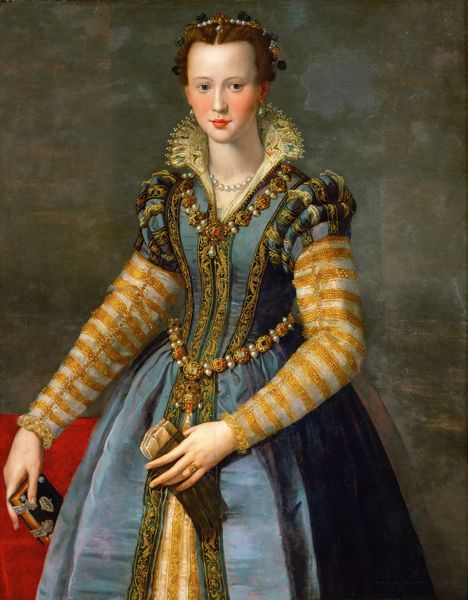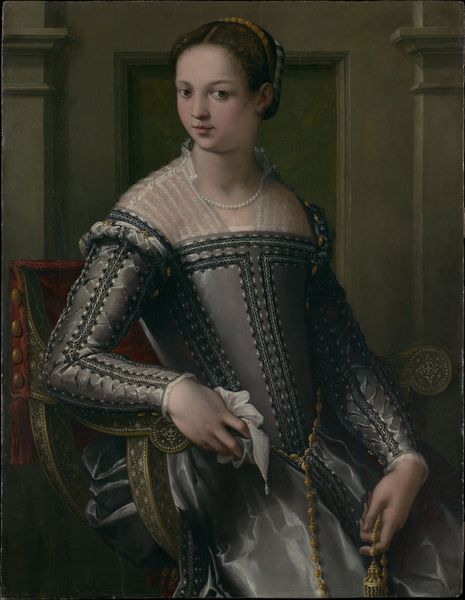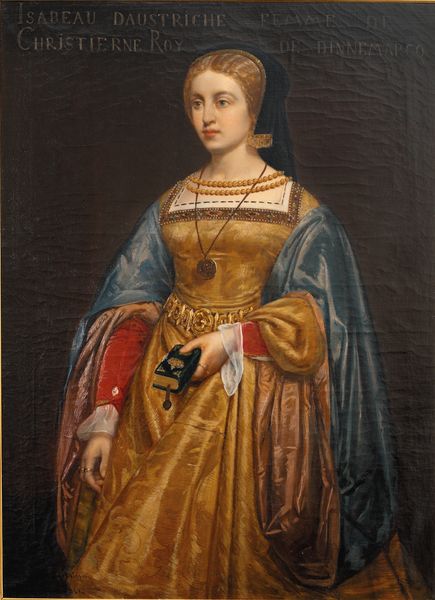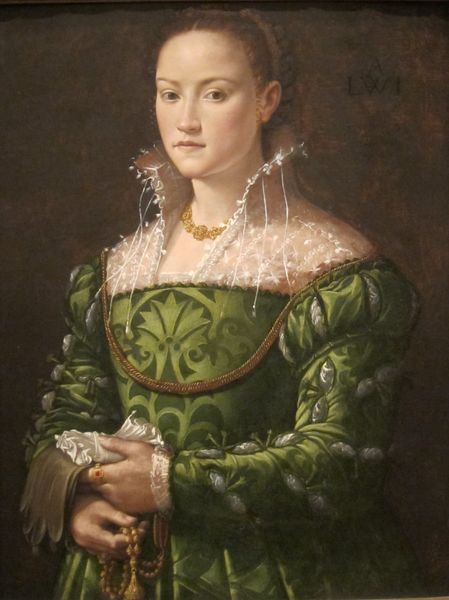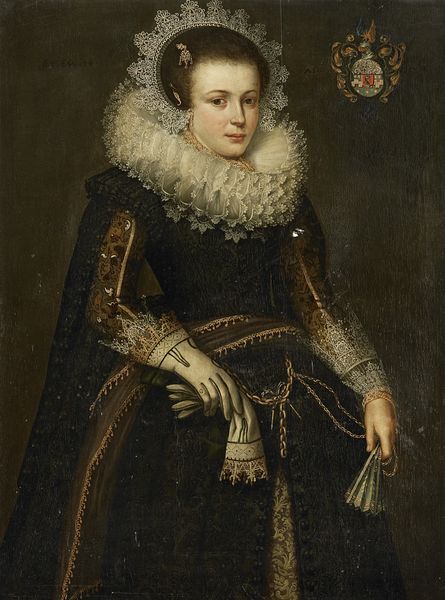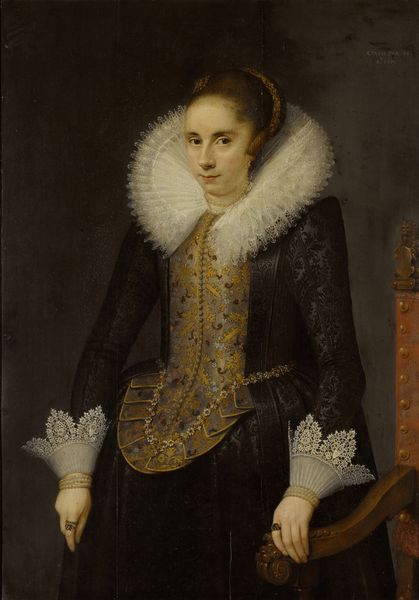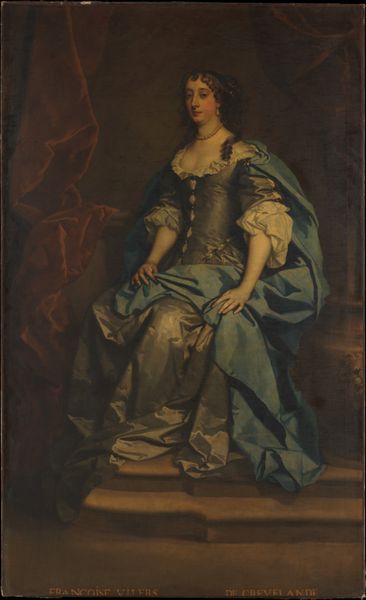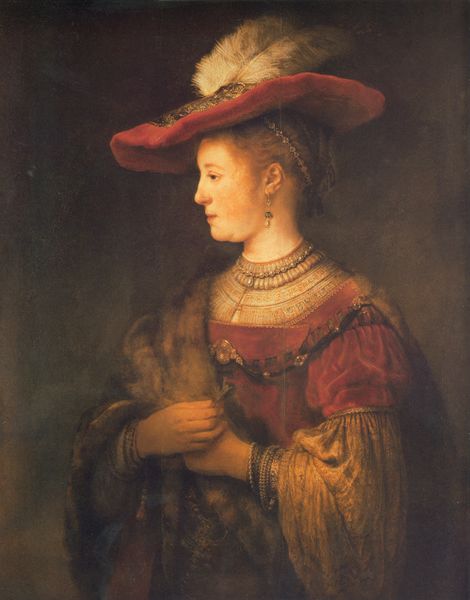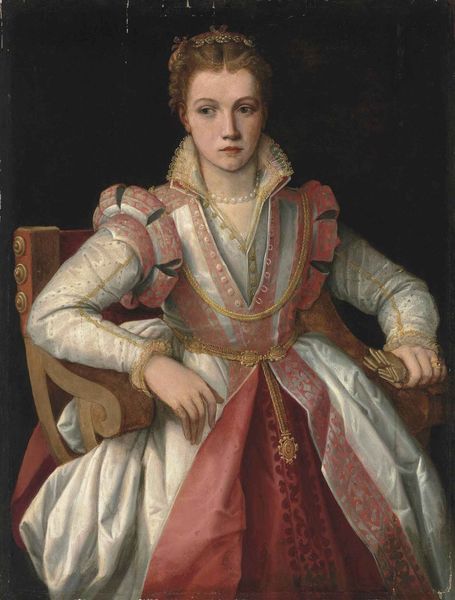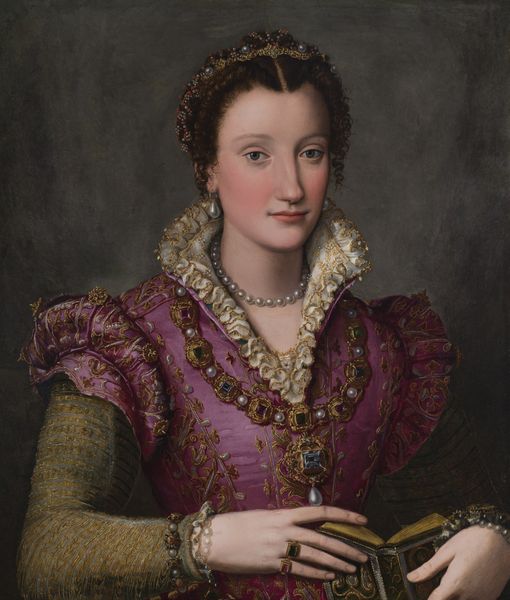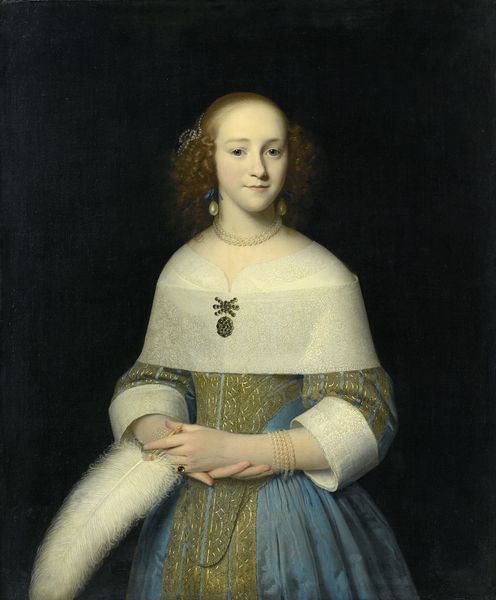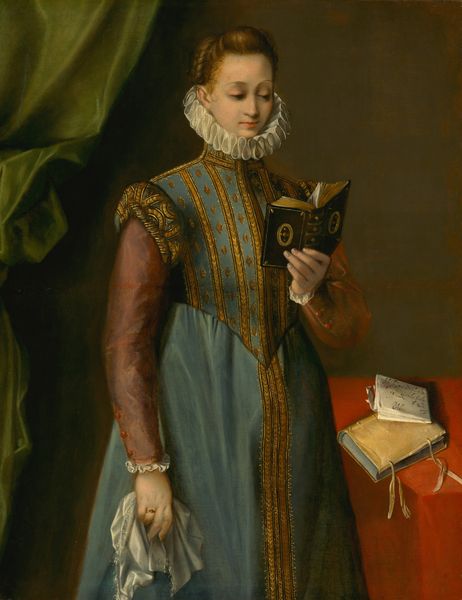
painting, oil-paint
#
portrait
#
painting
#
oil-paint
#
figuration
#
11_renaissance
#
genre-painting
#
italian-renaissance
Dimensions: 55 5/8 x 38 1/4 in. (141.3 x 97.2 cm)
Copyright: Public Domain
Curator: Bernardino Campi painted this "Portrait of a Woman" sometime between 1567 and 1569. It’s now held at the Metropolitan Museum of Art. Editor: My initial impression? Elegance wrapped in melancholy. Look at the soft blue of her dress against the muted green background—there's almost a sigh woven into the color palette. And that little dog! Like a fluffy full stop in the composition. Curator: Indeed, the composition and materials speak volumes about Renaissance portraiture. The meticulous rendering in oil paint—observe the texture of her gown and the intricate gold work—underscores the sitter’s affluence. One can imagine the resources and labor involved in producing such garments, reflecting status and societal values. Editor: Absolutely. It's all very 'material girl,' isn't it? Though I sense more than just wealth here. The dog, that's probably a symbol of fidelity, right? But she seems detached, almost trapped by the opulence surrounding her. Does her gaze strike you as weary? Perhaps hinting at the limited choices available to women, despite their high social standing. Curator: I agree; these portraits were often strategic social documents. Considering Campi's own standing in Cremona, he surely would have used specific techniques in applying pigments, mixing paint in the shop with his assistants. These nuances emphasize not just personal identity but project social identities back into his networks. The very consumption of artistic patronage by his sitter helps determine her legacy and the city's economy. Editor: Right. And the details, like that exquisite pomander she holds! One could get lost in the history of each meticulously painted element. Makes you wonder about her life beyond the frame, her days filled with embroidery, overseeing a household... or perhaps yearning for something more. I'd bet that purse she has would have some interesting materials! The colors. A poem. Maybe something rebellious, locked inside, waiting to come out? Curator: It's through understanding material processes of artwork like these that we access invaluable windows into social relations and artistic innovation of the time, giving voices to networks of influence often silent, letting us access Renaissance social codes that impact gender roles, cultural value, artistic labor and more. Editor: You make a compelling argument. Seeing her as an embodiment of her socio-economic status brings an entirely new weight. Thank you! Now that purse in the background suddenly feels even more profound and interesting.
Comments
No comments
Be the first to comment and join the conversation on the ultimate creative platform.
